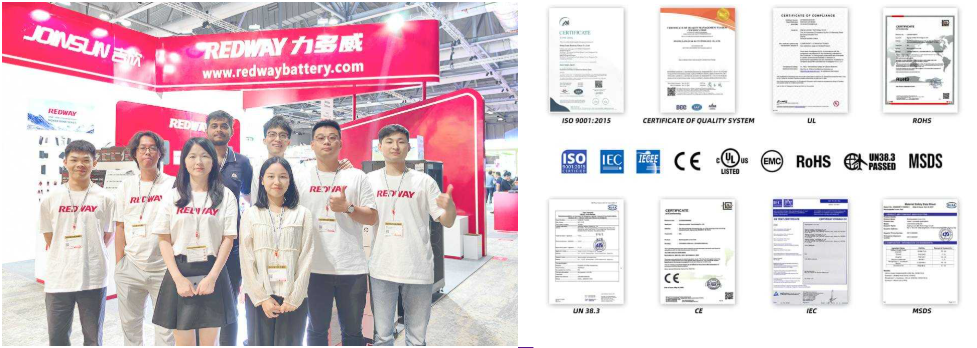A 200-watt solar panel can power small refrigerators (100-150W) for limited hours daily if paired with sufficient battery storage (200-400Ah). However, full-size refrigerators (500-800W) require additional panels and advanced energy management. Efficiency depends on sunlight availability, refrigerator type, and system configuration.
Golf Cart License Requirements in Michigan
How Much Power Does a Refrigerator Consume?
Refrigerators typically use 100-800 watts depending on size and efficiency. Modern 12V DC models consume 50-100Wh/hour, while standard AC units require 500-800Wh. Energy Star-rated units use 30% less power. Example: A 150W refrigerator running 8 hours daily needs 1.2kWh. Solar systems must account for startup surges (3-7x rated wattage).
Wholesale lithium golf cart batteries with 10-year life? Check here.
What Can a 200-Watt Solar Panel Actually Power?
In optimal conditions (5 peak sun hours), a 200W panel generates 1kWh daily. This can run:
• 12V fridge (100W) for 6-8 hours
• LED lights (10W) for 100 hours
• Small TV (50W) for 20 hours
Requires 200Ah lithium battery (80% usable capacity) for nighttime operation. Actual output varies with panel angle, temperature, and shading.
Why Battery Storage Is Critical for Refrigerator Operation
Lithium batteries (100Ah minimum) store excess solar energy for continuous cooling. A 200W panel needs 4-6 hours to recharge a 200Ah battery from 50% discharge. Lead-acid batteries require 30-50% more capacity due to lower depth of discharge. System must handle simultaneous charging/discharging through quality charge controllers.
Want OEM lithium forklift batteries at wholesale prices? Check here.
Can a 200W Solar Panel Run a Refrigerator?
Deep-cycle lithium iron phosphate (LiFePO4) batteries have become the gold standard for solar refrigeration due to their 3,000-5,000 cycle lifespan and stable discharge curves. Unlike traditional AGM batteries that degrade below 50% charge, lithium batteries can safely discharge to 80% capacity without damage. For a medium-sized 12V refrigerator drawing 75W continuously, a 200Ah lithium battery bank provides 38 hours of backup power versus just 22 hours with lead-acid equivalents. Temperature compensation is vital – battery efficiency drops 20% below 50°F and 35% above 100°F, necessitating insulated enclosures in extreme climates.
Which Refrigerators Work Best With 200W Solar Systems?
| Model | Avg Consumption | Capacity | Startup Surge |
|---|---|---|---|
| Dometic CFX3 45 | 42W | 42L | 150W |
| Alpicool C20 | 45W | 20L | 180W |
| Engel MT45 | 55W | 40L | 200W |
When Does Weather Impact Solar Refrigeration?
Cloudy days reduce output by 60-90%. Winter angles require panel tilt adjustments (latitude +15°). Systems need 25-50% extra capacity for 3-day autonomy. Thermal blankets and strategic placement reduce compressor cycles. Monitoring systems alert when battery voltage drops below 11.5V (critical threshold).
What Are the Hidden Costs of Solar-Powered Refrigeration?
Essential add-ons:
• MPPT charge controller ($150-$300)
• Pure sine wave inverter ($200-$600)
• Battery monitoring system ($80-$200)
• Surge protection devices ($30-$100)
Installation costs average $800-$1,500 for professional setup. Maintenance includes panel cleaning ($50/month) and battery replacements every 3-10 years.
Many users underestimate recurring expenses like replacement parts and efficiency losses. A $200 MPPT controller becomes essential for maintaining 93-97% charging efficiency versus PWM’s 70-75%. Inverters require derating – a “1000W” unit realistically handles 800W continuous loads. Battery maintenance costs $0.08-$0.15 per cycle for lithium vs $0.20-$0.30 for lead-acid. Over 10 years, a 200Ah lithium battery costs $900 in replacements versus $1,500 for AGM equivalents. Professional thermal imaging scans ($150) often reveal unexpected energy leaks in insulation.
“While 200W systems can work for compact DC refrigerators, we recommend 400W minimum for reliable 24/7 operation. Our field tests show lithium batteries paired with MPPT controllers increase efficiency by 28% compared to basic setups.”
– Redway Energy Solutions Lead Engineer
Conclusion
A 200-watt solar panel can power small refrigerators temporarily but requires careful system design. For full independence, combine multiple panels, lithium batteries, and energy-efficient appliances. Always conduct detailed load calculations before investing in solar refrigeration systems.
FAQs
- Q: How many solar panels for a full-size refrigerator?
- A: Standard refrigerators need 600-800W solar arrays (3-4 panels) with 600Ah battery banks.
- Q: Can I run a refrigerator directly from solar panels?
- A: Only with battery buffering – panels alone can’t handle power fluctuations.
- Q: What happens during multi-day cloud cover?
- A: Systems require generator backups or 3x battery capacity for uninterrupted operation.





